WATER versus WATER II 5-year update: Comparing Aquablation therapy for benign prostatic hyperplasia in 30-80-cm3 and 80-150-cm3 prostates
- PMID: 39539565
- PMCID: PMC11557270
- DOI: 10.1002/bco2.430
WATER versus WATER II 5-year update: Comparing Aquablation therapy for benign prostatic hyperplasia in 30-80-cm3 and 80-150-cm3 prostates
Erratum in
-
Erratum.BJUI Compass. 2024 Dec 30;5(12):1324-1329. doi: 10.1002/bco2.482. eCollection 2024 Dec. BJUI Compass. 2024. PMID: 39744071 Free PMC article.
Abstract
Objective: This study aims to compare the long-term outcomes of Aquablation for small-to-moderate (30-80 cm3) prostates with the outcomes for large (80-150 cm3) prostates at 5-year follow up.
Methods: The Waterjet Ablation Therapy for Endoscopic Resection of Prostate Tissue (WATER; NCT02505919) is a prospective, double-blind, international clinical trial encompassing 116 patients, examining Aquablation versus transurethral resection of the prostate (TURP) for LUTS/BPH in prostates sized between 30 and 80 cm3. In parallel, WATER II (W-II; NCT03123250), a prospective, multicentre, single-arm international clinical trial, explores Aquablation outcomes in prostates ranging from 80 to 150 cm3. Baseline parameters and 60-month outcomes were scrutinized using statistical analyses, including Students' t test, Wilcoxon tests for continuous variables, and Fisher's test for binary variables.
Results: There is a significant improvement in International Prostate Symptom Score (IPSS) from baseline to 60 months in both WATER (22.9 to 7.0) and WATER II (23.2 to 6.8) (P = 0.852). Urinary flow rate (Qmax) increased in both groups from baseline to 60 months (WATER: 9.4 to 17.3 cc/s; WATER II: 8.7 to 17.1 cc/s) (P = 0.933). Immediate and sustained enhancements were observed in IPSS and Qmax. At 5 years, a notable percentage of patients in both groups were BPH medication-free (WATER: 99%; WATER II: 94%) (P = 0.0517) and free from surgical retreatment (WATER: 95%; WATER II: 97%) (P = 0.508).
Conclusions: The 5-year follow-up affirms that Aquablation therapy exhibits sustained outcomes, minimal irreversible complications, and low retreatment rates for treating LUTS/BPH, irrespective of prostate volume ranging from 30 to 150 cm3.
Keywords: Aquablation; benign prostatic hyperplasia (BPH); lower urinary tracts symptoms (LUTS); robotics.
© 2024 The Author(s). BJUI Compass published by John Wiley & Sons Ltd on behalf of BJU International Company.
Conflict of interest statement
Mo Bidair worked as a consultant for improving current machine at Procept BioRobotics. Dean Elterman worked as an investigator and consultant at Procept BioRobotics. Kevin Zorn worked as consultant at Procept BioRobotics, consultant at Boston Scientific, and consultant at Laborie. Mitchell Humphreys worked as a consultant at Applaud, BD Peripheral, Boston Scientific, and Vitruoso. Mitchell Humphreys received a grant from Boston Scientific. Mihir Desai worked as a consultant for Procept BioRobotics. Kevin Zorn and Naeem Bhojani were paid for a training session at AUA 2018. Peter Gilling, Neil Barber, and Paul Anderson have performed commercial Aquablation procedures. No other author has conflict of interest with PROCEPT BioRobotics.
Figures
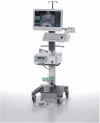
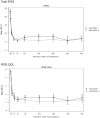
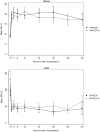
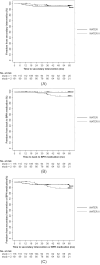
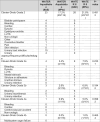


References
-
- EAU Guidelines . Edn. presented at the EAU Annual Congress Milan March 2023. ISBN 978‐94‐92671‐19‐6.
-
- McAninch JW, Lue TF, Smith DR, Lue TF, McAninch JW. In: McGraw Hill Medical , editorSmith & Tanagho's general urology 18th ed. 758 New York, NY: McGraw Hill Medical; 2013.
LinkOut - more resources
Full Text Sources
